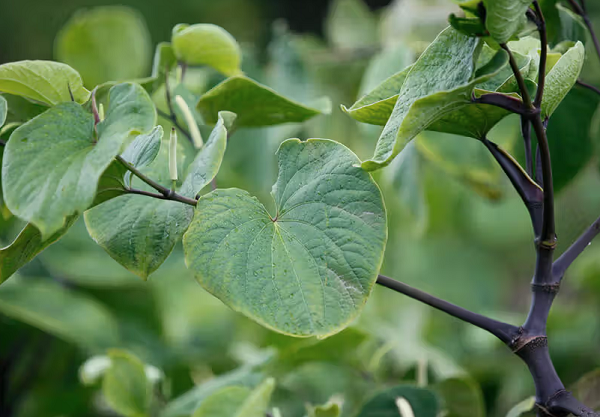Kava Kava Extract
Kava Kava Extract
- CAS No.
- Chemical Name:Kava Kava Extract
- CBNumber:CB51006789
- Molecular Formula:
- Formula Weight:0
- MOL File:Mol file
- Symbol(GHS)
- Signal word
- Hazard statements
- Precautionary statements
Kava Kava Extract Chemical Properties,Usage,Production
-
Background
Kava Kava is a tropical shrub belonging to the family Piperaceae. It is widely cultivated for its rootstock in three geographic regions of the Pacific: Polynesia, Melanesia, and Micronesia, although it is also widely cultivated in North African countries such as Morocco, Tunisia, Egypt, etc., where it is used as a ritual beverage to promote relaxation and a sense of well-being. Approximately 2.2 million Americans used Kava Kava as a natural alternative to antianxiety drugs, used as a diuretic and antiseptic, and it has been reported to help children with hyperactivity. The recommended oral dose for usage of Kava Kava as an anxiolytic is 50–70 mg of kavalactones two to four times a day and, as a hypnotic, 150–210 mg in a single oral dose before bedtime. The active principles of Kava Kava rootstock are mostly contained in the lipid-soluble resin, which is generally grouped into categories, namely: arylethylene-apyrones, chalcones and other flavanones, and conjugated diene ketones. The compounds of greatest pharmacological interest are the substituted α-pyrones or Kava pyrones, commonly known as kavalactones. Fifteen lactones have been isolated from Kava Kava rootstock, of which six are present in the highest concentrations and account for approximately 96% of the lipid resin. These are yangonin, methysticin, dihydromethysticin, kavain, dihydrokavain, and desmethoxyyangonin.

- Health effects Kava is the most commonly cited herb related to liver toxicity. Kava, an herbal sedative with antianxiety or calming effects, is prepared by extracting the rhizomes of Piper methysticum, a South Pacific plant. The active ingredients of the plant, known as kavalactones, are found mostly in the rhizomes. Early scientific research indicated that kava was as efficacious as antidepressant drugs and tranquillizers in treating anxiety disorders. In fact, kava extracts were considered safe alternatives to drug therapy for treating anxiety disorders before 1998. However, by 2003, 11 cases of hepatic failure had been reported related to the use of kava, including 7 patients requiring liver transplantation and 4 deaths. In 2003, kava was banned in the European Union and Canada, and the FDA issued another warning. By 2009, more than 100 cases of hepatotoxicity had been linked to kava exposure. Many have followed co-ingestion with alcohol, which appears to potentiate the hepatoxicity.
Kava Kava Extract Preparation Products And Raw materials
Raw materials
Preparation Products
Global(29)Suppliers
-
Supplier:
Rixing Chemical CO.,LTD.
- Tel:+86-852-57055271<br/>+8613237129059
- Email:sales@rixingbiz.com
- Country:China
- ProdList:209
- Advantage:58
-
Supplier:
Zhuoer Chemical Co., Ltd
- Tel:02120970332;<br/>+8613524231522
- Email:sales@zhuoerchem.com
- Country:China
- ProdList:2904
- Advantage:58
- Supplier: Shaanxi Xintianyu Biotechnology Co., Ltd
- Tel:18165211053<br/>18165211053
- Email:1039932273@qq.com
- Country:China
- ProdList:1008
- Advantage:58
- Supplier: Chengdu Push Bio-Technology Co., Ltd.
- Tel:028-85370565-229<br/>18080489829
- Email:3004654993@qq.com
- Country:China
- ProdList:8914
- Advantage:60
- Supplier: Shaanxi xintianyu Biotechnology Co., Ltd.
- Tel: 17749282610
- Email:3002817800@qq.com
- Country:China
- ProdList:981
- Advantage:58
- Supplier: Shaanxi Dideu Medichem Co. Ltd
- Tel:029-81024372<br/>15029046529
- Email:1027@dideu.com
- Country:China
- ProdList:10011
- Advantage:58
- Supplier: Chengdu Push Bio-Technology Co., Ltd.
- Tel: 18080489829
- Email:3004654993@qq.com
- Country:China
- ProdList:9209
- Advantage:58
- Supplier: Hubei Hengluyuan Technology co.ltd
- Tel:027-88188016<br/>18717196322
- Email:1764683941@qq.com
- Country:China
- ProdList:6699
- Advantage:58
Kava Kava ExtractRelated Search:
- GYNOSTEMMA PENTAPHYLLUM P.E. CHARANTIN(NEW)(P) Quercetin dihydrate Glycerides, C14-18 and C16-22-unsatd. Panax Ginseng extract Silymarin Magnesium stearate Cinnamon Bark P.E. Eurycoma longifolia powder extract Zizyphus spinosa Jujubosides Pepper (Piper), P. methysticum, ext. CITRUS AURANTIUM P.E. acanthopanax root Polygonum Cuspidatum P.E Resveratrols 20% 50% HPLC Rhodiola Crenulate(tibetan Ginseng) Salidroside 1-5%,Rosavins 3% HPLC Black Cohosh P.E Triterpenoid saponis 2.5% 8% HPLC KAVA Centella asiatica whole plant
- Herb extract
- 医药、农药及染料中间体
- 标准提取物
- 标准提取物
- 标准产品
- 植物提取物
- 植物提取
- 卡瓦内酯 卡瓦液体 卡瓦纯粉卡瓦提取物
- 卡瓦提取物30%
- 卡瓦提取物 卡瓦内脂
- 卡瓦提取物 KAVA P.E.
- 卡瓦提取物
- Kava extract